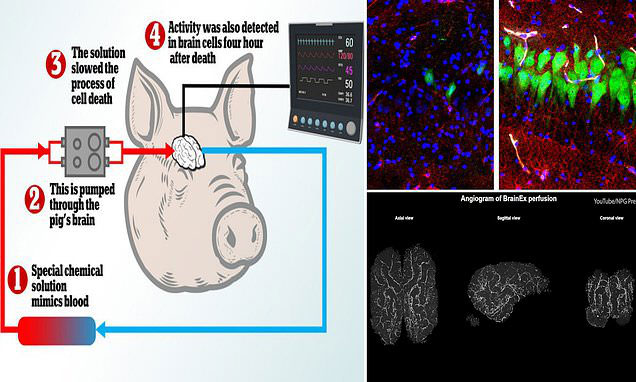The definition of death has been shaken: Scientists revive a pair of human eyes that died after 5 hours
In a breakthrough step, US scientists have partially restored life to the eyes of an organ donor who died five hours earlier.
By subjecting the retinal cells to a special tissue culture, the cells were able to respond to light and send out signals known as b-waves, "similar to the signal recorded." from a living object".
This is the first time that these b-waves have been reactivated from dead eye cells over a long period of time. And because the retina is also part of the central nervous system (CNS), the scientists asked: Could other cells such as the brain and spinal cord be restored in a similar way?
This will shake the definition of death, especially the process of brain death in the absence of oxygen, which is thought to be irreversible.

The retina is also part of the central nervous system (CNS).
The study was carried out by scientists from the University of Utah and the Scripps Research Institute. They found that after our bodies die, there are still some internal organs that can be kept alive. And this is useful for patients waiting for an organ transplant.
However, from the moment the circulation stops - or when the oxygen-carrying blood is no longer pumped to the nerve cells, the cells die within minutes. That makes efforts to bring them back to life often fail.
In 2019, a team of scientists at Yale University made the first breakthrough when they were able to restore cell signals in 32 dead pig brains after four hours. They do this through a system that pumps warmed blood mixed with medication into the pig's brain.
As a result, the circulatory system and some cells were revived. However, no EEG signal was recorded from this "revival" response, indicating that the pig brain cells are not really communicating with each other and the pig's consciousness is not revived.

The circulatory system helps revive pig brains at 4 hours after death by Yale University.
Now, also by restoring oxygen flow and creating a recirculating environment, the Utah scientists say they've gone a step further by reviving retinal cells from a dead state.
"We were able to awaken the light-sensitive cells in the human macula, which is the part of the retina responsible for our central vision and our ability to see details and colors clearly. color," explains biomedical scientist Fatima Abbas.
"In eyes obtained five hours after the donor's death, these cells are still responsive to bright light, colored lights, and even very dim rays."
"The difference is that we can make retinal cells talk to each other, the way they do in a living human eye to control human vision," said Frans Vinberg, another vision scientist. from the University of Utah explains further.
Specifically, the revived cells communicated with each other using b-waves. B waves are electrical signals produced when light hits the retina of a living person. Previously, scientists found that immediately after death, the b-wave signals in the eyes will also disappear, even if you shine a flashlight directly into the body's eyes.
"Previous studies have restored very limited electrical activity in the eye of an organ donor, but this has never been achieved in the macula and has never reached the level that we have demonstrated," says Vinberg. .

Study authors, Dr. Frans Vinberg and Dr. Fatima Abbas at the John A. Moran Eye Center, University of Utah.
It must also be said that the resurgence of b-wave signals in the dead person's retina does not mean that they can see again. Visual activity also requires the involvement of brain regions and higher levels of neurons.
However, research into how retinal cells cope with hypoxia may offer a first step towards restoring lost brain function.
"Since the retina is part of the central nervous system, our recovery of b-waves in this study raises a question: Is brain death - as it is now defined - really a condition recoverable?", the scientists wrote.
Currently, some definitions of 'brain death' require a loss of synchronic activity between neurons. If that definition is accepted, the human retinas in this new study are not yet completely dead.

New research challenges the definition of brain dead.
Also, if specialized nerve cells, called photoreceptors, can be revived to a certain extent, it could offer hope for future transplants. May help restore vision in people with eye disease.
"We hope this will advance organ donation associations, organ donors and eye banks by helping them understand the exciting new possibilities that this type of research offers," the researchers said. scientists said.
Their new study has been published in the journal Nature.
- Can still revive the dead
- People use fluent eyes language from birth
- The mystery of eyes 'killing people with just one look'
- Strange possibilities of eyes
- 19 most obsessive eyes in the history of world photography
- How does death feel?
- Video: The reason why things cannot revive after death
- Spain: Continuous earthquake, at least 10 people died
- A pair of twin-eyed twins causes fever on social networks
- How far are our eyes?
- People are still aware of being around after death
- Strange, even worse than 'death black'
 13 causes of non-itchy rash
13 causes of non-itchy rash How the mouse with human ears changed the world?
How the mouse with human ears changed the world? The truth about 'fried rice syndrome!
The truth about 'fried rice syndrome! What is dental implant?
What is dental implant?